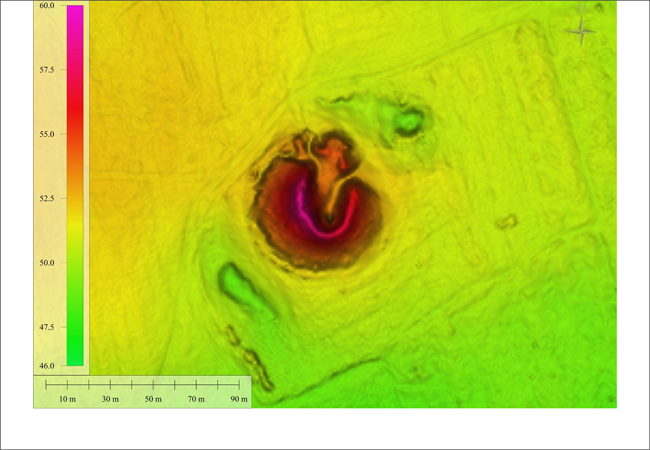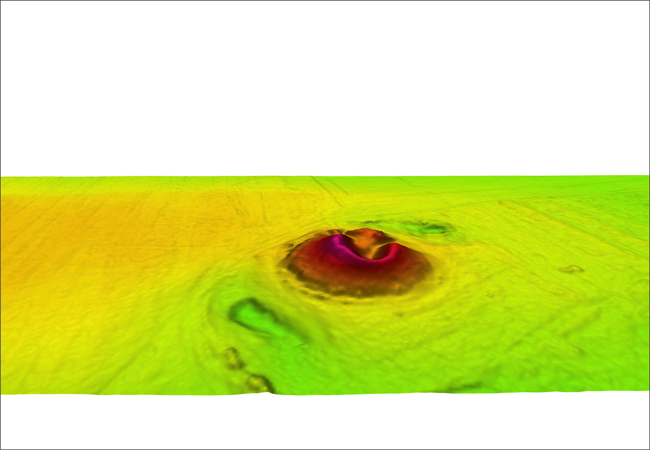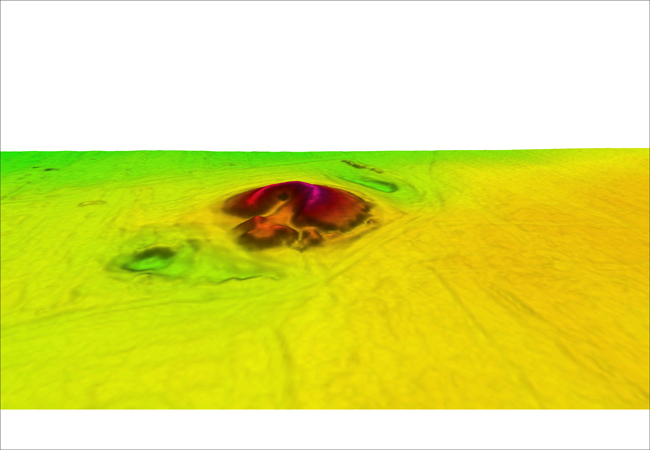This project deals with the Late Bonze Age Royal Tomb of Seddin, which is one of the few elite tombs with a monumental architecture. Within this project the entire composition of the tomb, the reasons for the monumentalisation, the technical realisation and the choice of its location within the whole area are examined.
Research
The “King’s Grave” at Seddin is considered the most outstanding evidence of late Bronze Age sepulchral culture in northern central Europe. It represents one of the few ceremonial or elite graves from the ninth century BC in the northern Alpine region. The burial mound and the grave chamber have been largely preserved. Following a hiatus of nearly a century, archaeological research in and around Seddin resumed in the year 2000.
The “King’s Grave” marks the core area of a late Bronze Age “wealth and power center” that was established in the Seddin region in 950 BC and persisted for over two hundred years. It is characterized by particularly voluminous burial mounds with above-average accoutrements and polygonal burial chambers made of stones. The Seddin region probably developed on the basis of either its favorable strategic position for trade or its control of trade routes.
The “King’s Grave” of Seddin brings together domestic and foreign, old and new, symbolic and profane, tradition and innovation, monument and miniature, in a manner all its own. The overall composition of the grave and its ritual embedding in the landscape are the subject of this interdisciplinary study.
Results
The archaeological autopsy of objects from the burial chamber demonstrates the extra-ordinary quantitative and qualitative aspects of providing for the dead. The types, amounts, and positions of the objects in the burial chamber are not random, but the result of deliberate selection. Some of the objects were symbolic in character and served mainly to determine the status and function of the main male grave. The burials of outstanding dead in metal vessels are considered a sign of “Homeric graves”. The additional depositions from the ossuary, in a large ceramic vessel, are known to us from the “Dolien graves” of the Villanova culture. This phenomenon is therefore being discussed with the Museo Civico Archeologico in Verucchio, Italy. The previous individual studies on the bronze amphora from Seddin and their rare comparanda put the manufacturing techniques and the origins of such magnificent vessels into an entirely new light. The documentation of the amphorae was taking place in close cooperation with the Dresden Archaeological Heritage Office in Saxony.
The photogrammetric and laser-based measurements by Beuth University of the burial chamber, burial mound, and surrounding area allowed the spatial dimensions of the individual findings and their relationships to one another to be captured for the first time. Three-dimensional models have been created of the burial chamber and burial mound.
Together with the geophysical surveys by Eastern Atlas GmbH, the archaeological investigations at the burial mound of the king’s grave document a sophisticated construction technology for this monumental structure. The mound is characterized by different layers of various materials. At least four layers of sand were each carefully covered with a sheet-like coating and with actual paving made of stones. The size of the burial mound, the structural achievements, its position in the landscape, and the durability of the installation document its monumental aspirations. Archaeological examinations of the contemporaneous barrow cemetery in the forested area known as the “Wickbold’sche Tannen”, however, provide important clues to the “normal” degree of late Bronze Age sepulchral culture in the surrounding area, which the monumental structure transcends.
Just north of the king’s grave runs an approximately 290 m long series of stone pits. The University of Mainz, the Institute of Geographical Sciences at the Freie Universität Berlin, the University of Applied Sciences Berlin, the Curt Engelhorn Center for Archaeometry GmbH and the Westphalian Public Observatory and Planetarium in Recklinghausen are involved in the natural sciences investigations of this site. Previous studies confirm the ritual nature of the finding and its astonishing temporal depth. Perhaps these pits served as a central ritual site for the more limited Seddin region. The king’s grave was presumably only deliberately built upon this heavily symbolic site near the end of the use of stone pits. Thus there exist aspects of “landscape as memory”, “landscape as identity”, “landscape as social order”, and “landscape as transformation”.
An international conference entitled “Der Grabhügel von Seddin im Kontext der Bronzezeit in Norddeutschland und Südskandinavien“ was held on June 16-20, 2014. The results achieved in Seddin so far were presented, discussed, and evaluated.
A second international conference entitled “The Grave Mound of Seddin: Between North and South and the Bronze and Iron Ages” was held from June 14-16, 2017.
On 8 December 2015, the B-2-5 research group gave a presentation at the Freie Universität Berlin entitled “Seddin – A Monumental Burial Mound of the Bronze Age” as part of the lecture series “XXL – Monumentalized Knowledge: Extra-Large Projects in Ancient Civilizations”. An additional lecture, “New Research Results on the King’s Grave of Seddin in the Prignitz”, took place at the Stadtmuseum Berlin as part of “Topoi im Museum”.



